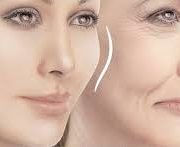Filler
What Are Fillers?
Dermal fillers are usually injectable gels or fats injected into the skin. The injection increases volume and the increased volume helps remove wrinkles and folds, plump up lips, and fill out hollow or sunken areas of skin.

In some cases, the effect of filler is the same as a facelift, with the difference that fillers are done without any surgery and at a lower cost. But it should be noted that these treatments are temporary and should be repeated every few months once. Sometimes, filler injections may be performed with other facial rejuvenating treatments like Botox injections.
Of coarse, your physician will recommend one or more needed treatments by examining your skin.
Fillers Are Usually Divided into Two Categories:
- Absorbable fillers
- Non-absorbable fillers
Absorbable Fillers:
Absorbable fillers dissolve by the body over time and they are often derived from the body’s own molecules. Once, the most common type of absorbable fillers was collagen that was derived from animals, but then human collagen was also used. After a while, collagen gave his place to another absorbable filler called hyaluronic acid. The difference between the two is that collagen causes severe allergic reactions and requires testing, while in hyaluronic acid, allergic reactions and complications are rare. Moreover, collagen lasts 6 months at best, but famous compounds of hyaluronic acid, like Juvederm, lasts about one year.

Non-absorbable Fillers:
Non-absorbable fillers often contain acrylic compounds. These fillers are used less than absorbable fillers because they have a potential for granulation under e skin. But note that acrylic forms only one part of the volume of these fillers and the rest is made up of absorbable substances, such as collagen and protein.
Where Can Dermal Fillers Be Used?
- Like fat injections, fillers are also used to fill out facial wrinkles and give you a more youthful look.
- To soften facial creases and enhance shallow contours.
- To plum up and increase the volume of different areas of the face, like cheeks and lips.
Types of Fillers:
Fillers include collagen, hyaluronic acid, hydroxyapatite, polyacrylamide, silicon, and poly methyl acrylate. Generally, an injectable substance should be physiological, safe, easily injected, and long lasting. The possible side effects of these compounds include scar reactions, skin rashes, and systemic complications.
In the cases where the patient has an allergic reaction to any of filler’s components, or if there is an infection, gel or filler injections should not be performed.
Uses of gel or fillers:
Gel injections are usually used to plump up lips, add volume to cheeks, and remove smile lines or frown lines. In addition, with fillers, you can fill out many kinds of tear troughs and hollows or depressions in the skin.
Generally, fillers are mostly used for: removing wrinkles and folds, plumping lips and cheeks, smoothing out smile lines and frown lines, filling out wrinkles around the eyes, restoring lost volume to loose and sagging skin, removing scars and stitch marks.
Gel or Filler Procedure Steps:
If you want to rejuvenate your face using gel, you should talk to your doctor about history of your diseases in the first session.
At this stage, the doctor recommends a treatment plan for you to find out how dermal fillers are used to improve the appearance of your face.

The steps to do gel or filler injection are as follows:
First, dermal fillers containing local anesthetics are used to make the injections easy for the patient. Next, the injection area is determined and dermal fillers are injected into the skin. After injecting gel or filler, a piece of ice is placed on the area immediately and then, the injected area is massaged with a softener cream.
The injection procedure will not take more than an hour and this time actually depends on the size of the area which is supposed to be treated. If needed, the doctor uses local anesthesia for all patients, since the amount of pain at the injection time is negligible.
After injecting gel or filler, your face will swell ,so you should wait a few days to see the results. Two or three days after injections, you can return to your daily routines and put on makeup again.
Post-treatment Instructions:
- After injections, do not wash the injected area up to 12 hours.
- Do not use cosmetic products for several days after injections. However, you can use a colorless sunscreen after a day of injections. And if you have gel injections in your lips, do not apply lipstick for a week, you can use ointments like gentamicin instead.

- Do not take a sauna or steam bath up to one month after injections, because heat reduces the durability of the gel. Also, using cold compresses before and after injections, reduces the possibility of bruising.
- Do not use drugs, such as Ibuprofen, vitamin E, vitamin C, and green tea for one week.
- Do not have laser, microdermabrasion, and peeling up to 6 months.
- After gel or filler injections, drink enough water for a few days.
- After gel or filler injections, do not smoke for a day.
- It is very important to observe the post-treatment instructions. A completely safe injection procedure will lead to the full healing of your skin and appearance.
Finally, it can be said that filler causes a better water supply to the skin and freshness and youthfulness of it. In brief, due to rare side effects, major tissue adaptation, natural results, significant durability, and very few complications, gel or filler injections have been the most popular cosmetic procedures and the biggest trends.


Leave a Reply
Want to join the discussion?Feel free to contribute!